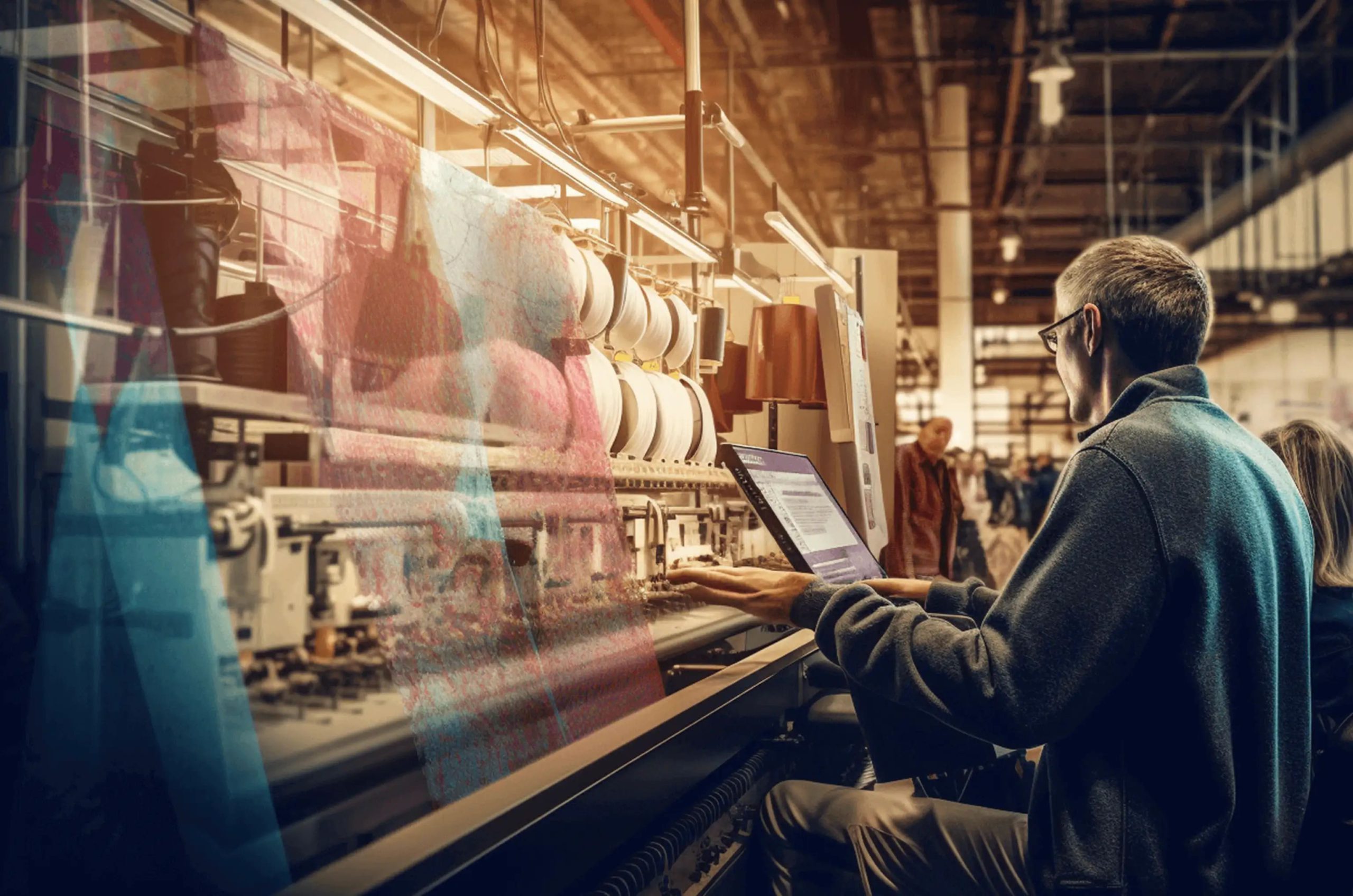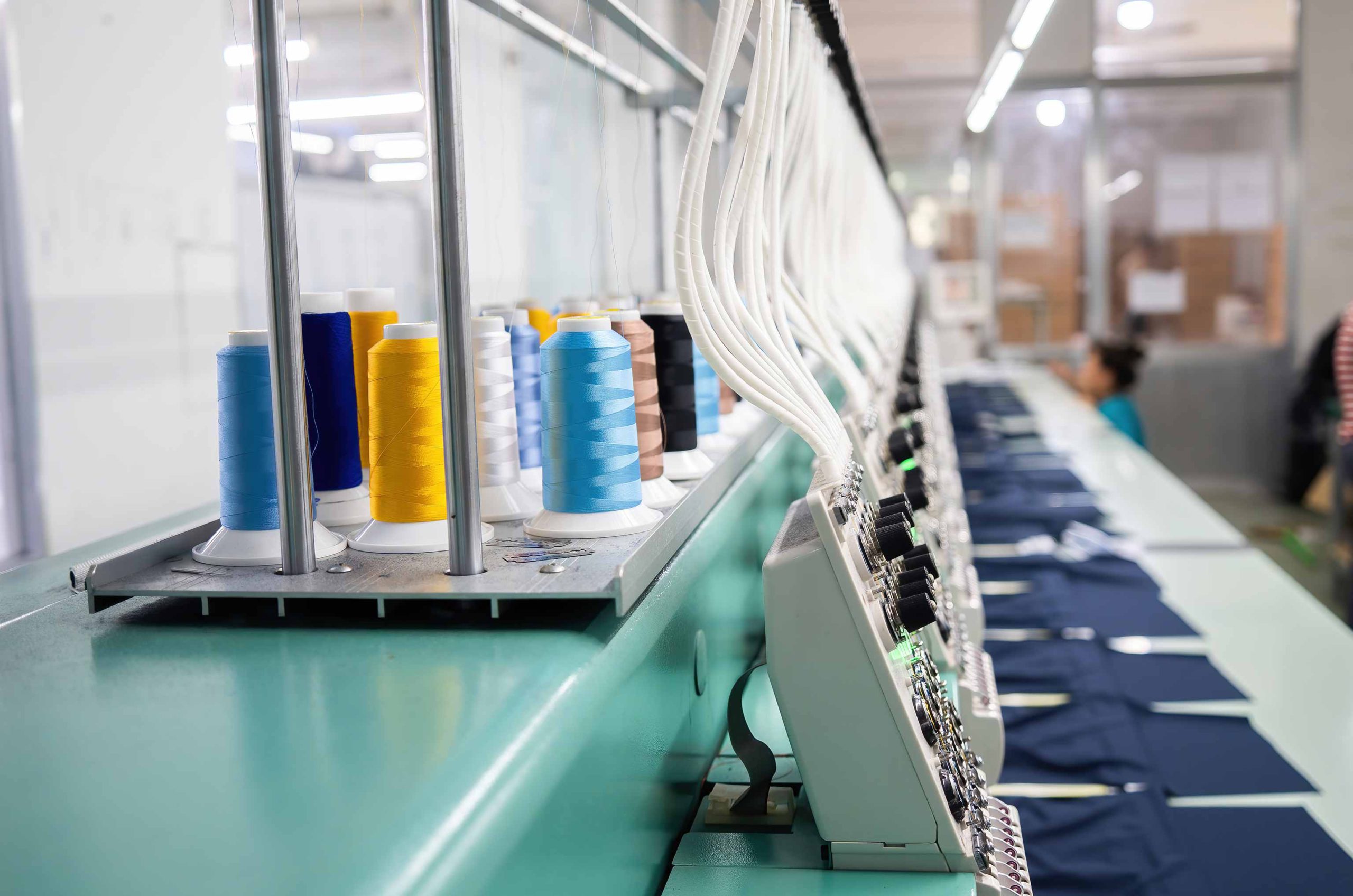What you need to know about Supply Chain Management in Apparel Industry
-
Introduction
The fashion industry is one of the largest in the world, with a global supply chain that supports millions of jobs. It is a complex system that touches people in every corner of the globe. As consumers become more environmentally conscious, they’re demanding greater accountability from the brands they shop from. Supply chain management (SCM) has an important role to play in expressing and acting on these values.
In this article, we’ll help you get a better understanding of what a supply chain means in the context of fashion, what are the main challenges facing the apparel value chain and how businesses can tackle those challenges with the use of modern technology.
-
What is a supply chain?
Supply chain is a set of activities that allow the transformation of raw materials into finished products passing across various people, services and businesses that perform the role of designers, suppliers, manufacturers, distributors and more. The term ‘supply chain management’ refers to the process of managing this complex web of relationships. Supply chain management is a lot more than just moving products. It’s about managing processes, managing people and managing information.
An alternative definition of supply chain from the Supply Chain Council states that a supply chain encompasses “every effort that is involved in producing and delivering a final product from the supplier’s supplier to the customer’s customer.”
From the ancient Spice Route over the Indian Ocean to the vertically-integrated modern supply chain networks, the concept of global supply chains has changed quite a bit in the last few centuries. Today, supply chains are often complex and involve many different parties, including suppliers, manufacturers, distributors, retailers and customers. These parties may be located in different countries or even continents.
-
What are the key stages of the apparel supply chain?
The apparel supply chain is a complex network of interconnected processes that are further complicated by the need for high quality products, tight deadlines and demanding retailers. The following are the key stages of a typical apparel supply chain:
1. PLANNING
The first stage of the apparel supply chain is planning or conceptualization, which refers to all stages associated with creating a new product or service. This can include brainstorming ideas, defining requirements, researching materials and production methods, developing prototypes and testing them out on customers before full scale production begins.
2. DESIGN
Designers play an important role in the creation of new products by translating ideas into patterns and sketches that are used by manufacturers to make their garments. This can be done through hand drawing or through computer software programs such as Adobe Illustrator or InDesign. Once those designs have been approved by management, it’s time for sourcing!
3. SOURCING
This step involves finding suppliers/manufacturers who can meet all your needs in terms of price, quality, delivery time frame etc. This is where raw materials are procured, or purchased, and then brought together to create the final product. You may also want to consider outsourcing some steps or even completely outsourcing an entire process if it makes sense financially or logistically speaking. Generally speaking, you will need 4 main categories of suppliers: fiber/yarn supplier, textile mill, trim supplier, and finally, the cut & sew factory.
4. MANUFACTURING
Manufacturing involves producing both finished goods (finished pieces of clothing) and semi-finished goods (fabric or garment pieces). The manufacturing process may vary depending on whether you’re outsourcing production or doing it internally; if you’re outsourcing production to another factory in another country, there will be additional steps like shipping and customs clearance that go into getting your product from point A to point B.
5. QUALITY INSPECTION & CONTROL
Quality control and inspection can happen at any stage in the production process—before shipping out an order; during transportation; upon arrival at its destination—and is important because it helps identify defects such as faulty stitching or missing buttons before they reach customers’ hands!
READ MORE: Why is quality control so important in the garment and textile industry?
6. DISTRIBUTION
Once products are ready to be sold, they have to be distributed to the marketplace (e.g., online stores or retail outlets). This involves getting your products from the manufacturer (or wherever) to shops all over the world so that customers can buy them from different locations as per their convenience. Distributing means sending something out for delivery so that people can get their hands on it quickly without having too much hassle involved with doing so themselves.
7. MARKETING & SALES
This involves promoting your products through marketing activities like product development and advertising campaigns with the goal of promoting sales at retail locations throughout the world. It also includes monitoring competition garment prices so that you can adjust yours accordingly if necessary (this may happen after manufacturing has already begun).
8. END-OF-LIFE
Although disposal has traditionally not been counted as a part of the typical supply chain, there has been a rising shift towards a circular model of production in the last few years. Companies are attempting to close the loop by integrating processes like rework, waste disposal and recycling of the goods they produce into their fashion cycle. So, when products have reached their useful lifespan (i.e., they’re not selling anymore), they need to be disposed of properly. This can mean repurposing lightly damaged clothes instead of throwing them away.
-
What are the types of supply chains in the apparel industry?
As you can see, the apparel industry is complicated. There are three main types of supply chains in the apparel industry: push, pull and push-pull.
- The first one is known as a push strategy. In this method of supply chain management, analysts project demand for your item and push them to retailers based on their predictions. The downside is that it can lead to overproduction or underproduction because analysts make mistakes about consumer behavior. This can cost a company money if too much product has been produced or if not enough has been produced.
- A second type of supply chain in the industry is known as a pull strategy – a waiting game where retailers wait for consumers’ demands before creating products that meet those demands. This helps decrease costs associated with holding inventory that may not sell (or sell fast).
The benefit of this method comes from its efficiency when compared with other strategies because it’s much easier for manufacturers to predict consumer trends than it would be for retailers themselves (which would be impossible). Unfortunately, there could still be some issues when using this method since there’s no guarantee that any given trend will take off immediately after being introduced into stores. Thus, making just one batch might not be enough until sales figures become available later on during production cycles. - The push-pull supply chain is a compromise between the other two supply chains: here, production is done in small batches so there are no major costs associated with waste or overproduction; however, customers’ demands are still able to influence production levels when needed.
-
What are the biggest supply chain challenges in the apparel industry?
It’s not easy to manage an apparel supply chain. The industry is highly complex with many moving parts. In fact, the apparel supply chain is more challenging than the supply chains of many other products. Here are a few reasons why:
- It’s global. The apparel industry is a global one, so it can be challenging to manage everything from a single location. You need to be able to communicate with suppliers and partners in different parts of the world, which means having a good understanding of how different cultures operate and what language they speak. There are also significant challenges that arise from working with suppliers in other countries where the legal and moral framework may be entirely different than what you are used to operating within.
- It’s seasonal. Seasonal changes in weather affect demand for certain items at different times of year, so you need to be able to predict when your customers will want new products—and sometimes plan ahead by ordering more inventory if necessary—to ensure that your company has enough product on hand when orders come in during those seasons without overproducing unnecessarily or having an excess amount left over after certain seasons end (which would then have little value).
- It’s fragmented. In addition, there are multiple players involved throughout this process (including manufacturers who produce raw materials like cotton; factories where clothes are made into garments; wholesalers who sell clothing at wholesale prices directly from retailers). This makes things more complicated than if these roles were performed by fewer people within each step along this process rather than separate entities altogether.
- It’s highly variable. There are also numerous factors that affect revenue generated through sales such as taxes on imported goods versus domestic production costs as well as regulations regarding labor practices and wages paid by contractors working abroad (where most apparel companies source their materials). All of these variables have to be factored into any forecast model used during planning stages!
Apart from these reasons, other challenges include the rising political tensions and trade wars with China (and more recently Russia); concerns about human rights violations and labor abuse; a changing retail landscape that has left many manufacturers scrambling for new revenue sources… The list goes on!
-
What is the future of supply chain management in the apparel industry?
The future of supply chain management in the apparel industry will be shaped by the following trends:
- The rise of connected stores or omnichannel retail. With consumers shopping via a variety of channels and at different locations, it’s becoming increasingly important for brands to be able to track their products all along the value chain, from factory to shelf. We’re already seeing some companies implement this with RFID tags that allow them to monitor their products through every step of production, sale and delivery.
- End-to-end value chain integration to create more efficient and more profitable ways of operating. By bringing together all parties involved in product development, production and distribution under one roof (or online platform), companies will be able to automate processes more easily than ever before—which will enable them both save money and shorten production times while increasing quality control standards along every step of their operations process.
- The rise of traceability systems powered by tracking software. Today’s consumer demands complete visibility into how their products were made and where they were produced (e.g., using social media). As governments increase regulations around labor practices across industries—including apparel manufacturing which accounts for over 300 million workers globally—companies must adapt or risk losing market share if not complying with new requirements from customers who demand transparency about how goods were sourced and manufactured.”
- Improvements in AI modelling, Big Data, and Data Analytics. AI modelling is already being used extensively within the fashion industry because it can help predict trends based on previous market research data sets like those found on social media platforms such as Facebook & Instagram – but what’s next? As big data becomes even bigger (due largely due high volumes generated by mobile devices) there needs new methods developed which analyze these datasets effectively so we can learn from them instead of just relying solely upon intuition or experience alone.
-
Conclusion
The apparel supply chain is a complex, ever-changing system that involves thousands of stakeholders. It can be a difficult job to manage these stakeholders and ensure quality and efficiency throughout all stages of production.
Let us help simplify supply chain management for your fashion business. Speak to a WFX fashion consultant today to learn how your fashion business can become more efficient!










